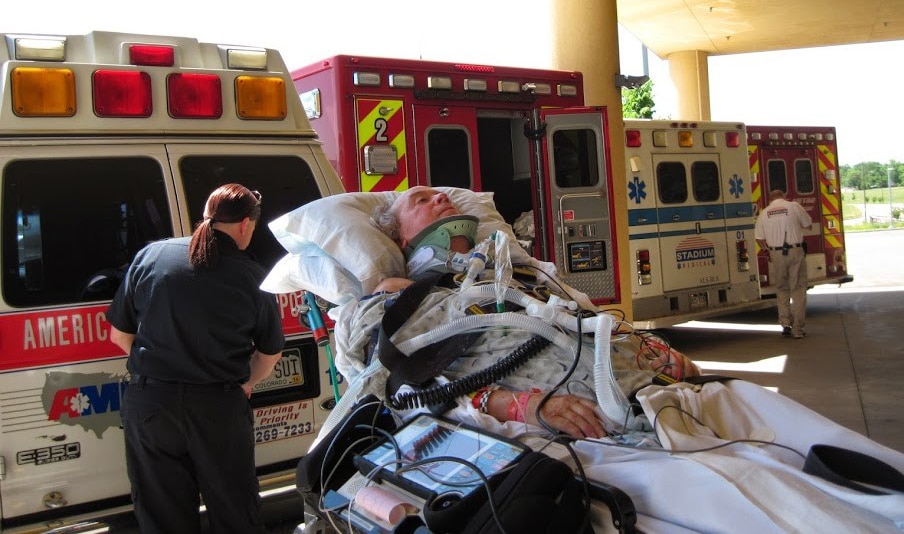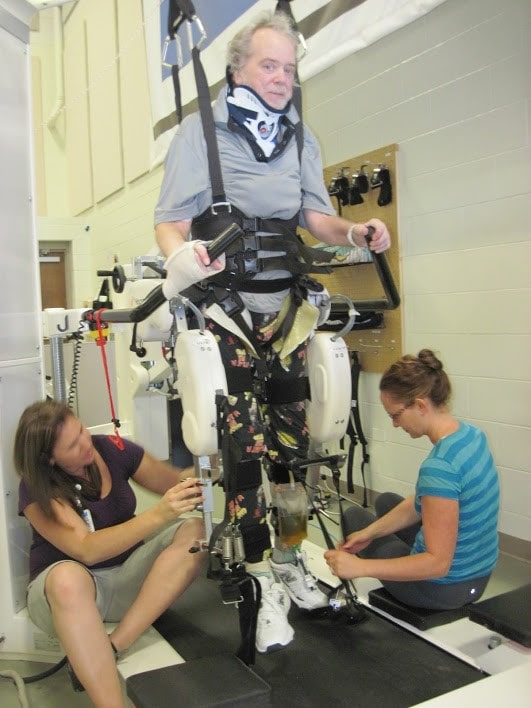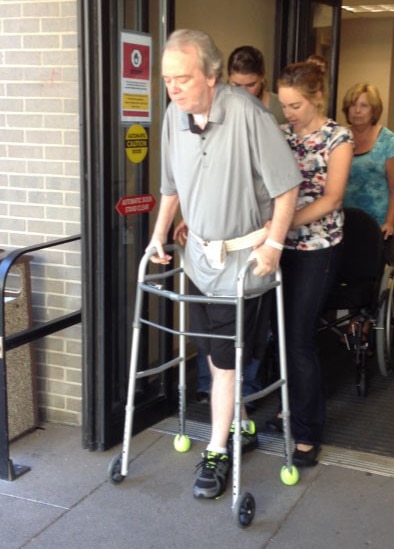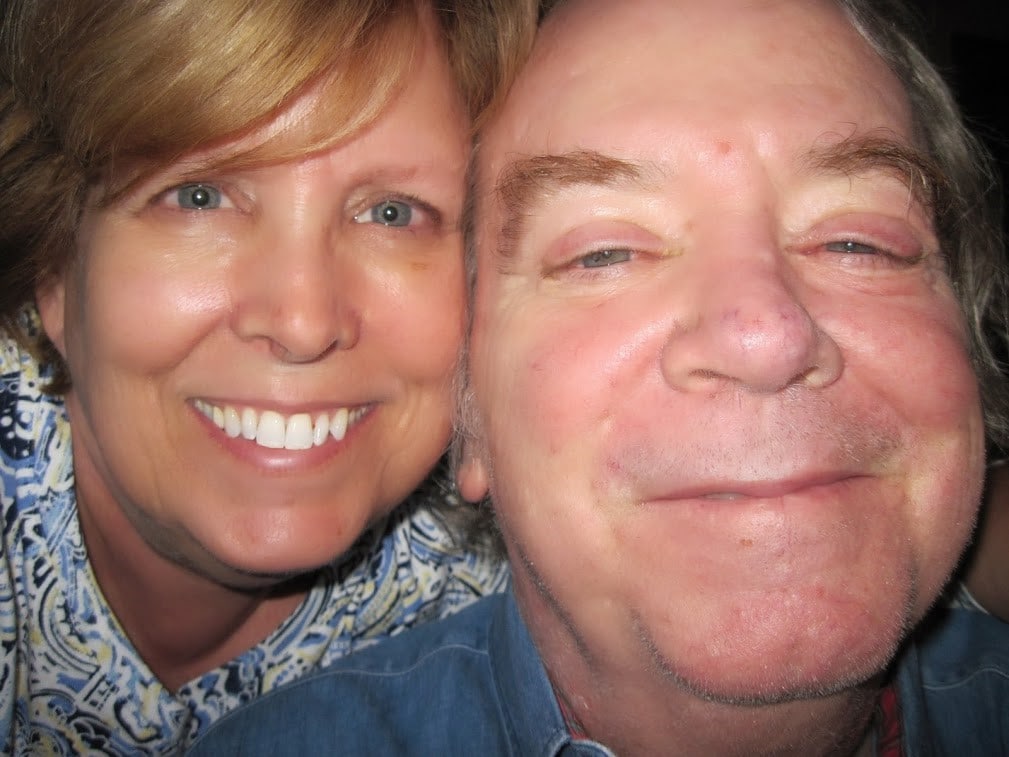Lee Oesterle sat down with United Spinal to discuss his journey toward recovery after a spinal cord injury changed his life forever at the age of 61.
Lee is the Executive Director of a private, nonprofit child placement agency in Colorado. The agency – Kids Crossing – recruits, trains, licenses, and supervises foster parents. Kids Crossing also has an outpatient mental health clinic that specializes in treating emotional trauma. Lee is a Licensed Clinical Social Worker providing therapy services in his part-time private practice. Lee is an incomplete quad – he bruised his spinal cord (C3-C4).

1.) How did you incur your spinal cord injury?
I went for a bike ride in Summit County, Colorado on a warm and sunny Memorial Day in 2013. I was riding too fast on a sweeping downhill trail. I went off the trail and down a hill for about 100 yards before I hit the bottom. It was like hitting a brick wall. I went over the handlebars – landing on my shoulder and head. I was on my back – looking at the sky with a scrub oak branch in my view. I could not feel or move anything below my neck. Someone had seen me go off the trail. He called 911 and an amazing team of EMTs stabilized me – got me into the ambulance – and got me on the Flight for Life helicopter. I was flown to St. Anthony’s Hospital in Lakewood, Colorado.
2.) What was the hardest part of the first days in the hospital?
I was in ICU for three weeks. After a few days I began experiencing ICU psychosis. I believed that the doctors and nurses were out to kill me. Being completely paralyzed meant I was very vulnerable. I had some pretty terrifying moments. Days before being discharged from ICU they were unable to wake me one morning. They intubated me and put me on a ventilator. It turned out my lungs were not able to expel carbon dioxide. It seemed that this was contributing or causing the ICU psychosis because it went away once I was on the ventilator. Of course, now I couldn’t move or talk. I was transferred to Craig Hospital on June 19, 2013.
3.) What was your greatest fear at first?

It was definitely being afraid that the doctors and nurses were going to kill me. The ICU psychosis was really bad at night. I didn’t think they would do it during the day – there were too many people around. I figured they would kill me sometime during the night. I would be terrified when a nurse would come into my room in the middle of the night. The hospital had a rule prohibiting anyone from spending the night in a patient room. I so badly wanted a family member to stay with me overnight. Fortunately, my wife Terrywas eventually permitted to stay so there was always someone I knew in the room with me – day and night.
4.) How did your family members respond to the news and how did it impact them?
My family was wonderful – I felt so much love and support. Terry was at my side – literally – from the time I was admitted to the ICU until I was discharged from Craig Hospital. She stayed in an apartment on the grounds of the hospital. We celebrated our 33rd wedding anniversary when I was at Craig. What happened to me – what was happening to me – also happened to her – was also happening to her. It brought us closer together. She was and is my rock.
5.) What were the important milestones in rehabilitation?
It seemed like every milestone was important. I experienced the milestones more like successes. The milestones were also signs of independence. Getting a power wheel chair was an early milestone/success. I no longer had to rely on someone to push me. I could get around on my own. The most important milestones happened during what I now refer to as “The Best Week Ever!”. Three weeks before my discharge from Craig Hospital I had numerous milestones, including having bowel movements on my own; my trach tube removed, walking unassisted for the first time; and having my feeding tube removed.

6.) What was the hardest part of rehabilitation?
I have spent my entire adult life taking care of others – as a helping professional. It was very difficult to be dependent on others. In the beginning I had to rely on others to do everything for me. I worried about the burden I would be on Terry when we went home. A major part of rehabilitation was her learning how to take care of me. Being the amazing person she is – she never said or did anything that made it seem she was feeling like taking care of me was a burden. In those tough moments where we allowed ourselves to talk about what the future was going to be like, Terry always told me, “It’s OK – we are going to get through this”.
7.) How did you cope with the emotions after your spinal cord injury?
My primary coping skill has always been about taking action. If I am feeling down – what can I do about it? If I am feeling fearful – what can I do about it? This was an excellent coping skill for going through rehabilitation. It seemed that there was always something to do. I threw myself into my rehab. I worked very hard. It helped me maintain my perspective – especially on days when I struggled.
8.) What coping mechanisms did you find most helpful during your recovery?
Being aware of my gratitude and expressing my gratitude was one very powerful and effective coping mechanism – from the first moments after my accident. Being dependent on staff for everything made me feel very vulnerable. I was and am so grateful for how the staff always treated me with dignity and respect and most of all made me laugh. Humor was another very powerful and effective coping mechanism.
9.) Did you receive any mental health services or therapy?
I did really well emotionally until I was approaching the two-year anniversary of my injury. I then started having some classic symptoms of Post-Traumatic Stress Disorder (PTSD). I began to experience anxiety. I was having trouble concentrating. I was having flashbacks of my accident. I was having very negative thoughts and feelings – doubt and second guessing myself about that day and about traumatic events I experienced in the ICU and at Craig Hospital.
I have worked with PTSD for 30 years – as a Licensed Clinical Social Worker and as the Director of a foster care agency. If you have had a spinal cord injury, I would recommend that you become familiar with PTSD. In very basic terms – PTSD is a normal set of reactions to a very abnormal event. Even knowing all about PTSD – my outpatient case manager at Craig Hospital had to talk me into getting some therapy.
My therapy consisted of four sessions of Eye Movement Desensitization and Reprocessing (EMDR). EMDR is a form of therapy that helps people heal from the symptoms and stress that are a result of very disturbing life experiences like SCI. My symptoms were completely resolved. EMDR desensitized me to the traumatic memories and allowed me to reprocess the negative thoughts I had been having about my accident. Resolving my PTSD symptoms meant I felt pride because of my accomplishments. I had experienced this awful accident and had overcome so much.

10.) What is something you would like to share with those who have recently been injured and are just starting their rehabilitation process?
If you are just starting your rehabilitation – then I can almost guarantee you things are going to get better – things will get easier. This is not just my opinion. This is what the research and literature reports. If it doesn’t get better and/or doesn’t get easier – then you need to do something about it. Find a support group. Surround yourself with supportive – positive – funny – people. Don’t be afraid to ask for some help. Get into therapy – maybe try some EMDR. You can do this!
Watch Lee’s video “Learning to Walk at Age 61” here: https://vimeo.com/332994350/b20126ba0a
May is Mental Health Awareness Month. Its purpose is to raise awareness and educate the public about mental illnesses; the realities of living with these conditions; and strategies for attaining mental health and wellness. Additionally, Mental Health Awareness Month strives to reduce the negative attitudes and misconceptions that surround mental illnesses.

